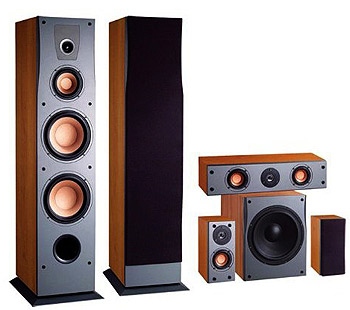If you are looking for ways of building your own home theater, or you’re just into audio and video technology, you are in for a treat.


If you are looking for ways of building your own home theater, or you’re just into audio and video technology, you are in for a treat.
When you’re watching a movie at home, surround sound and proper visual alignment can make all the difference. But how do you set up a professional system without hiring a professional?
Going to the movies today is a very different experience from going to the movies 30 years ago, the picture is clearer, most of the movies are in color, and the quality is a lot higher.
But the biggest change is probably the sound experience. In movie theaters of the 1930-1960s, the entire soundtrack was played on a single speaker or collection of speakers positioned behind the movie screen.
Today, theater audiences expect to hear sound coming from every direction; and the technology that once characterized only movie theaters is now fairly standard in home entertainment centers.
What is Surround Sound anyway? There are many ways to make and present a sound recording. The simplest method, and the one used in the earliest sound movies, is called monaural or simply mono.
Mono means that all the sound is recorded onto one audio track or channel (a single spiraled groove in a record, for example, a single magnetic track on tape), which is typically played on one speaker.
Now, there is the two-channel recording, in which sound is played on speakers on either side of the listener, are often referred to as stereo. This isn’t entirely accurate, as stereo (or stereophonic) actual refers to a wider range of multi-channel recordings.
Two-channel sound is the standard format for home stereo receivers, television and FM radio broadcasts. The simplest two-channel recordings, known as binaural recordings, are produced with two microphones set up at a live event (a concert for example) to take the place of a human’s two ears.
When you listen to these two channels on separate speakers, it recreates the experience of being present at the event.
The Stereo said and done, Surround recordings take this idea a step further, adding more audio channels so sound comes from three or more directions.
While the term "surround sound” technically refers to specific multi-channel systems designed by Dolby Laboratories, it is more commonly used as a generic term for theater and home theater multi-channel sound systems.
There are special microphones that will record surround sound (by picking up sound in three or more directions), but this is not the standard way to produce a surround soundtrack.
Almost all movie surround soundtracks are created in a mixing studio. Sound editors and mixers take a number of different audio recordings, dialogue recorded on the movie set, sound effects recorded in a dubbing studio or created on a computer, a musical score and decide which audio channel or channels to put them on.
In the next section, we’ll learn a little bit about how surround sound was created and see how it was configured in older theaters. When you listen to such sounds, they create an impression of the sound coming from all around you and hence the terms "surround system”.


